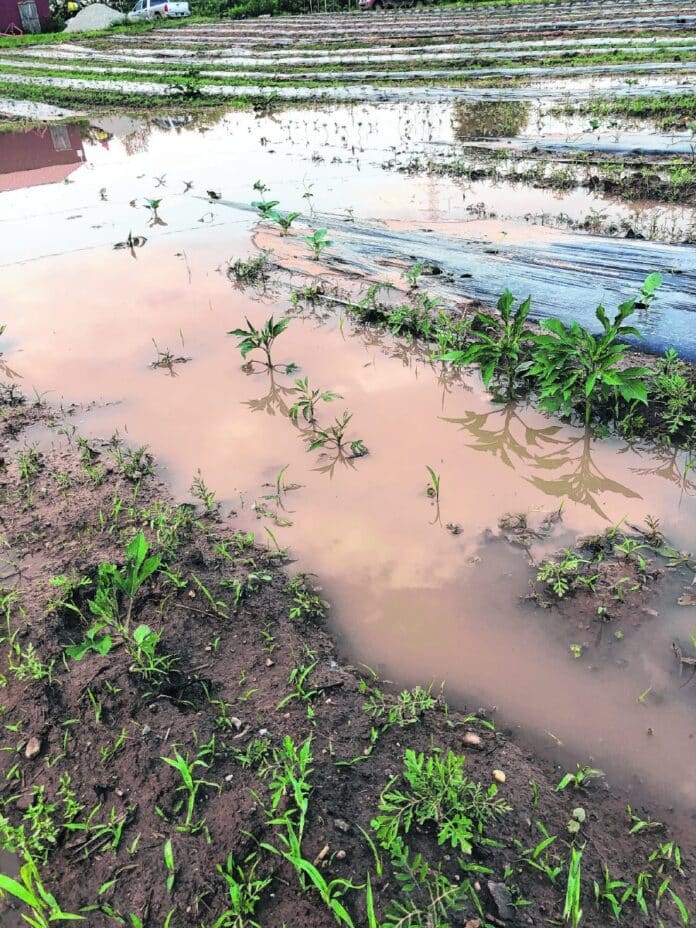
HANCOCK COUNTY — The federal government has made another disaster declaration in Indiana due to last year’s rainy planting season, and support is once again available to farmers in Hancock County.
The U.S. Department of Agriculture designated nine Indiana counties as primary natural disaster areas on Feb. 27. Counties contiguous to those are eligible for support as well.
Farmers who suffered losses from three disaster events may be eligible for USDA Farm Service Agency emergency loans, the USDA said in a news release.
Those loans can be used to meet various recovery needs such as replacing essential items like equipment and livestock; reorganizing a farming operation; or refinancing certain debts, according to the USDA.
Producers in primary disaster areas of Hamilton, Lake, Perry, Porter, Spencer and Tipton counties who suffered losses because of excessive rain that occurred beginning March 1, 2019 can apply for the emergency support. That also goes for counties contiguous to them, which includes Hancock County.
Jon Sparks, a Hancock County farmer who represents the county along with seven others on the Indiana Farm Bureau Board of Directors, agreed Hancock County didn’t get hit quite as hard as those in the primary disaster areas. He also represents Hamilton County, one of those primary areas, on the Farm Bureau board, as well as Madison and Marion counties, which are counted as contiguous counties in the recent disaster declaration.
Sparks added he’s glad Hancock County farmers and others in the contiguous areas have the opportunity to apply for emergency loans if they need them.
“It’s great for farmers to have that option,” he said. “It wasn’t an easy year for them. To have that option to try to maintain their business and keep moving forward is obviously a good thing.”
National Weather Service data for the Indianapolis area reports 47.16 inches of precipitation in 2019. That’s only about 5 inches more than normal, but Earl Breon, a meteorologist with the weather service in Indianapolis, said there’s a reason 2019 was anything but normal when it came to rain’s effect on agriculture.
“We had more events with heavy precipitation,” which led to flooding issues, rather than lighter events that occurred more frequently, Breon said.
That heavy precipitation kept Hancock County farmers planting into June, a couple months behind schedule. Then, the fall posed issues on the other end of the weather spectrum. Ronnie Mohr, a Hancock County corn and soybean farmer, told the Daily Reporter in October that he felt the season’s dryness was having an impact on his soybean crops.
Farmers felt the sting come harvest time. The U.S. Department of Agriculture estimates Hancock County’s 2019 corn yield at 138.2 bushels per acre, almost 50 bushels fewer per acre than the year before. Hancock County’s soybean yield came in at an estimate of 42.3 bushels per acre, a drop of almost 15 bushels per acre from 2018.
Last year’s weather also led the USDA to designate Hancock County and 73 other Indiana counties as primary disaster areas in August 2019. But the USDA told the Daily Reporter in an email that no emergency loans have been requested in Hancock County since then. It may be because farmers are more attracted to another one of the department’s programs.
“Generally more producers request an operating loan due to the lower interest rate,” the email said. “Operating loans are not tracked by emergency vs. non-emergency.”
On March 2, the Farm Service Agency’s website listed an interest rate of 2.625% for the direct farm operating loan program, while the emergency loan program’s rate was a point higher.
Bruce Kettler, director of the Indiana State Department of Agriculture, told the Daily Reporter in an email that he welcomes the latest announcement of support.
“In Indiana we work very closely with our partners on the federal level, both with USDA Ag Marketing Service, Farm Service Agency and the Natural Resource Conservation Service, just to name a few,” Kettler said. “Extreme rainfall and excessive flooding can be detrimental to crops and farm ground; it’s nice to see that (USDA) Secretary (Sonny) Perdue understands that and is offering assistance to our Hoosier farmers who were affected.”
The deadline to apply for the loans is Oct. 19, 2020.
According to the news release, the “FSA will review the loans based on the extent of losses, security available and repayment ability.”
Farmers seeking more information are encouraged to visit farmers.gov/recover or visit their local FSA office. Hancock County’s is located at 1101 W. Main St., Greenfield and can be reached at 317-462-4501.
[sc:pullout-title pullout-title=”Need an emergency loan?” ][sc:pullout-text-begin]
Hancock County farmers impacted by excessive rain since March 1, 2019 are eligible to apply for emergency loans from the U.S. Department of agriculture. For more information, visit farmers.gov/recover or the Hancock County Farm Service Agency, 1101 W. Main St., Greenfield. The office’s phone number is 317-462-4501.
[sc:pullout-text-end][sc:pullout-title pullout-title=”By the numbers” ][sc:pullout-text-begin]
Crop yield estimates
Corn
Hancock County
2019: 138.2 bushels per acre
2018: 187.5 bushels per acre
Indiana
2019: 169 bushels per acre
2018: 189 bushels per acre
Soybeans
Hancock County
2019: 42.3 bushels per acre
2018: 57.1 bushels per acre
Indiana
2019: 51 bushels per acre
2018: 57.5 bushels per acre
Source: U.S. Department of Agriculture Indiana Field Office
[sc:pullout-text-end]
Farm revenues expected to plunge




